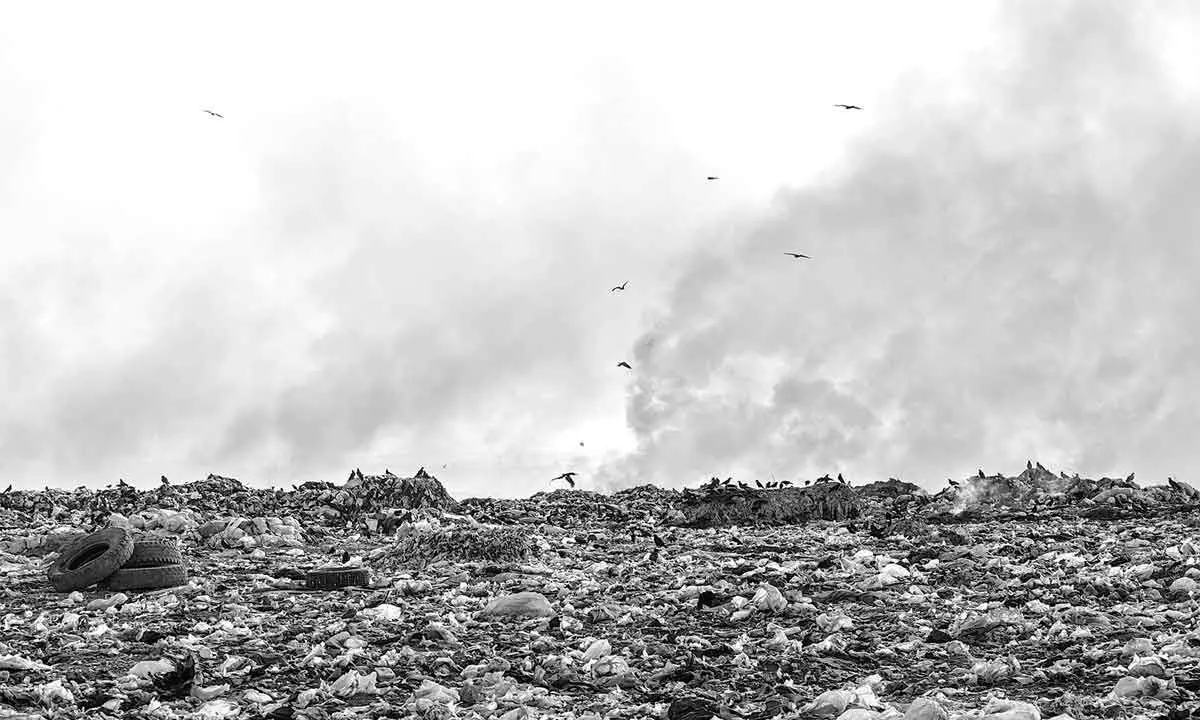Domestic hazardous waste: A toxic threat to humans

The responsibility of every household is to segregate dry and wet waste, store it in two separate bins and hand it over to the waste pickers.
Bengaluru: The responsibility of every household is to segregate dry and wet waste, store it in two separate bins and hand it over to the waste pickers. How many individuals are aware of the fact that Domestic Hazardous Waste (DWH) must be separated as well? TheBruhat Bengaluru MahanagaraPalike(BBMP) is currently carrying out a three-way segregation process, which is the separation of dry, wet and sanitary waste. However, DHW which is collected under the dry waste category can be a grave threat to humans in the long run if they are not properly treated.
Biomedical waste, e-waste, sanitary waste, inflammable substances used in paints, pesticides and so on can be classified under DHW. The civic body states that Bengaluru generates almost 5,000 tonnes of waste every day. "The amount of DHW generated in the city is negligible. The responsibility of the local body is to collect household waste," says a BBMP official.
Importance of waste segregation
Despite several attempts, many people still aren't aware of the reason behind segregation of waste. "Although the government repeatedly spreads awareness on thesegregation of waste, numerous people still do not know rationale behind the separation of waste. In fact, many of them are unaware of the term DHW and its long term impact on human health. Individuals still dump some amount of waste in vacant sites not realising that this is a serious issue," says Arjun Prakashan, a student of ecology.
Although one may not witness immediate consequences, the long-term repercussions of not segregating waste is severe. "It is essential to segregate waste since they can be treated appropriately in different ways. It also prevents them from reaching landfills and reduces the amount of impact it has on the environment. Taken as a whole, the entire process of collecting, transporting, recycling and disposing becomes easier once the waste is separated. If one doesn't segregate waste properly, this will end up in landfills mixed which can decompose, release harmful gas and contaminate the environment. Once these chemical enter our food chain through ground water, crops that are raised by utilising this water may not be fit for consumption as they possess these harmful chemicals," he adds.
High-risk groups include individuals residing near landfills and waste disposal workers who come in contact with these waste materials. "Climate change, air, soil and water contamination are all long term effects of improper waste management. It can also affect the people living near these landfills as they are exposed to improperly managed waste. The other group at risk are the waste disposal workers as direct exposure can lead to diseases as the release of chemical waste into the environment causes chemical poisoning,"he explains.
What can be done
Every journey begins with a single step and it does not have to begin with the external world as it can start from you. "DHW must be separately treated since they can cause a serious illness if they are not properly disposed. Examples of DHW generated at a household level include batteries, paints, pesticides, lamps, bulbs, broken glass, electronics and so on. It is vital to ensure safe disposal of these wastes and at a household level, having separate bins can bring a change. One can also wrap hazardous waste in a paper or make use of a different bag while handing them over to the waste pickers," he concludes.














